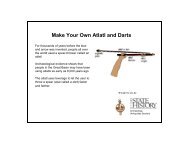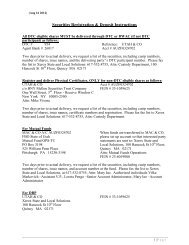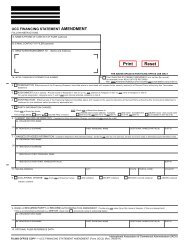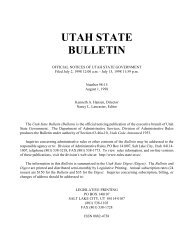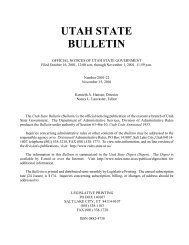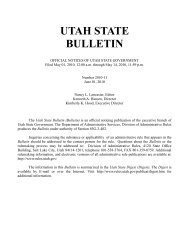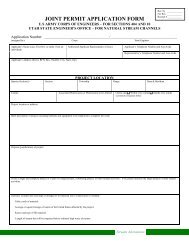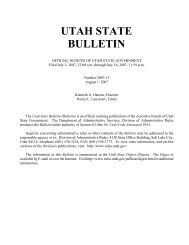Lynx avoidance [PDF] - Wisconsin Department of Natural Resources
Lynx avoidance [PDF] - Wisconsin Department of Natural Resources
Lynx avoidance [PDF] - Wisconsin Department of Natural Resources
You also want an ePaper? Increase the reach of your titles
YUMPU automatically turns print PDFs into web optimized ePapers that Google loves.
Identifying Characteristics andBackground InformationDescription<strong>Lynx</strong> (<strong>Lynx</strong> canadensis) and bobcats (<strong>Lynx</strong> rufus) aremedium-sized wild cats. Adult males are usuallylarger than females in both species. <strong>Lynx</strong> weightsaverage 24 pounds for males and 20 pounds forfemales. Bobcat weights average 26 pounds for malesand 15 pounds for females. Average lengths (fromnose to tip <strong>of</strong> tail) are very similar for lynx andbobcats: 34 inches for males <strong>of</strong> both species, 32inches for female lynx, and 31 inches for femalebobcats.Bobcat pelts may be light gray, yellowish brown, buff,brown, or reddish brown and streaked or spotted withblack or dark brown. Under portions <strong>of</strong> the body arewhite with black spots and with black bars on the forelegs. <strong>Lynx</strong> generally have more gray and less red intheir pelts than bobcats and the belly fur is grayishwhiteor buff-white with mottled, indistinct blackspots.<strong>Lynx</strong> have ear tufts and facial ruffs on their cheeksthat are larger and more conspicuous than those onbobcats. Ear tufts are usually longer than 1 inch onlynx but shorter than 1 inch on bobcats. Bobcat andlynx tails are approximately 4–6 inches long andmatch their pelt color except for the tip (about the lastinch). The tip <strong>of</strong> the tail on bobcats is usually blackonly on the upper side whereas on lynx the entire tipis black.6


![Lynx avoidance [PDF] - Wisconsin Department of Natural Resources](https://img.yumpu.com/41279089/6/500x640/lynx-avoidance-pdf-wisconsin-department-of-natural-resources.jpg)
